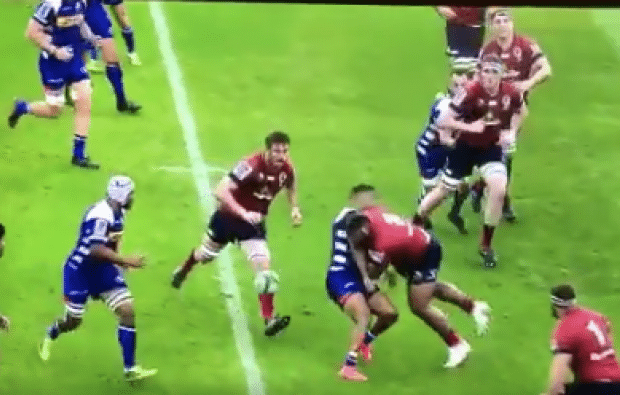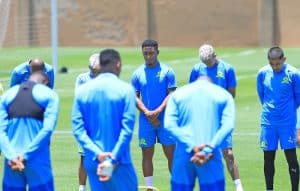The nonsensical non-punishment of Reds prop Taniela Tupou for a dangerous tackle on Stormers back Craig Barry has once again made a mockery of Sanzaar’s judicial process, writes CRAIG LEWIS.
Year after year, it doesn’t take long for serious question marks to be raised over the consistency of Sanzaar’s citing process and the often contradictory lengths of suspensions that are handed down for acts of foul play.
Such concerns were again brought starkly back into the spotlight when Tupou escaped any significant punishment, despite a nasty-looking tackle during last Saturday’s clash against the Stormers.
It’s worth viewing it carefully once again:
Despite such damning footage and Sanzaar’s assertion that it viewed all available camera angles, it was deemed that while Tupou had contravened law 9.11 relating to a ‘reckless or dangerous’ act, it had not reached the red-card threshold.
Watching the footage again, it beggars belief that the Sanzaar judicial committee determined that Tupou had attempted to ‘use his arms’, but simply ‘failed to properly grasp his opponent in the tackle.’
By the looks of it, Tupou dips his shoulder before launching himself with force into the upper body and chin area of Barry, who is whipped back at a rate of knots. Not only is it clearly a no-arms tackle, it is also late and dangerous.
It’s interesting that Sanzaar suggests in its findings that the contact was only to the ‘right shoulder and his opponent’s upper chest area’ while stating that it had taken into account a written statement from Barry and the Stormers’ doctor.
While it may have clarified that Barry escaped any serious injury, surely the nature of such a clearly dangerous tackle simply must be met with a suspension of at least some significance?
On Twitter, highly-regarded former Test referee Jonathan Kaplan also provided a definitive view of what he described as a ‘disgraceful tackle’.
Former Springbok coach, and now SuperSport pundit, Nick Mallett was equally scathing when sharing his opinion on the incident.
‘There were no arms used in the tackle by the No 3 [Tupou]. It was high and had force. The tackle went straight into [Barry’s] head, and his head spins back there. That is a concussion waiting to happen.
‘For Tupou to have been allowed to stay on the field is exactly what is wrong with rugby at the moment. We should not allow that.’
All of this comes at a time when there have been renewed efforts from World Rugby to ensure there is a crackdown on dangerous tackles to prioritise the safety of players and reduce the number of concussions.
Part of this is meant to see officials adopting a zero-tolerance approach, while engendering a culture change that eventually leads to players lowering their tackle height.
When reviewing high tackles, officials, and by association, the judicial committee should be primarily considering three factors:
1. Contact (where was the initial and final contact, and were arms or shoulder used?)
2. Action (was the tackle accidental, reckless or deliberate?)
3. Force (was there force?)
When reviewing the Tupou tackle again, there can surely be no doubt that he has endangered his opponent with a high tackle that leads with the shoulder, is reckless, and is with force.
By all accounts, it is a red-card offence that warrants far more than just a warning. By comparison, Sharks flanker Jacques Vermeulen recently received a two-week suspension for charging into a ruck.
Sanzaar, where is the consistency? Where is the accuracy?
There is some answering to do.





